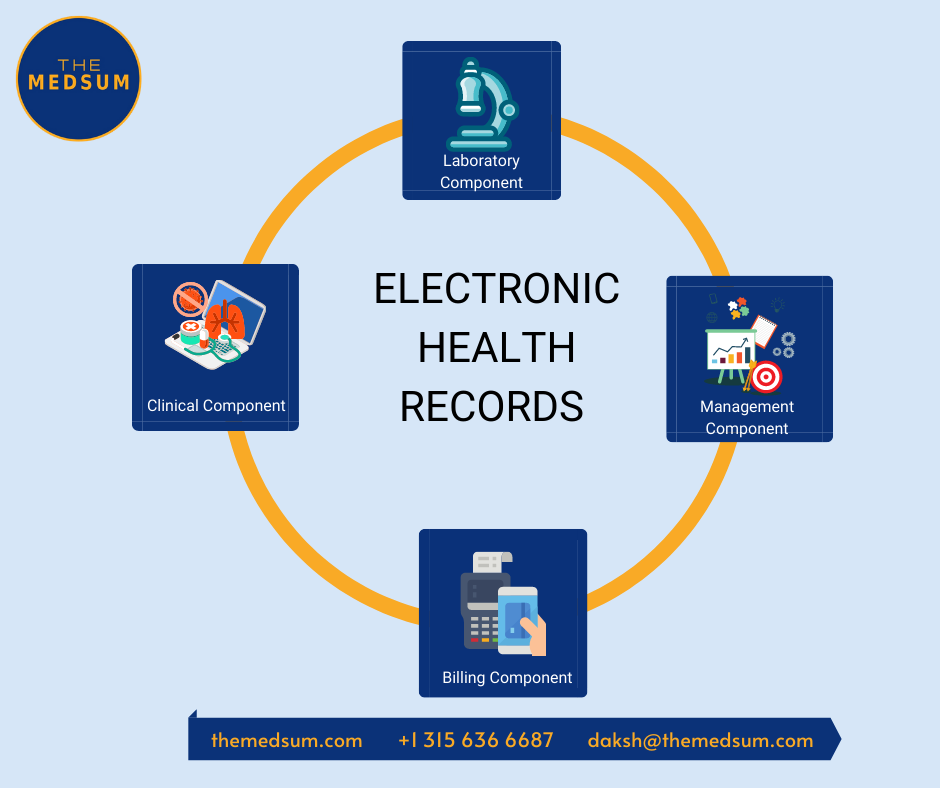
The sanctity of health records is of the utmost importance in any given situation. These health records play a major role in the course of treatment, insurance claims, and further medical advice for patients for chronic illnesses too. The onus of preserving such documents falls on the healthcare provider, and they have been looking for ways to improve their information maintenance systems. Recently, the American government mandated the move to electronic health records from paper-based documents to improve accessibility, accuracy, and traceability of the health records. Since then, most leading hospitals and clinics have incorporated electronic health record systems into their patient care regime.
Electronic Health Records - Definition
Electronic health records are digital versions of a patient’s medical record. It contains all details like personal information, treatment details, medical history, allergies, special notes, and laboratory details. The data recording process is faster, more accurate, and consolidated with the option to provide access to different stakeholders. Vendors providing the electronic health record systems often customize the fields as per the hospitals’ requirements.
Components of Electronic Health Record
Irrespective of the hospital or nature of the treatment, there are some common components present in all electronic health records. Each component of the electronic health record is owned by a team of caregivers and is important to study the medical treatment provided in totality.
Management Component
The management component of the electronic health record contains all the fundamental data about the patient. That may include and not be limited to personal information, contact information, insurance details, and other demographic details. That is necessary for management procedures such as patient admission, registration, and discharge. Most hospitals also provide a unique ID to each patient to bring up the records in the future easily.

Clinical Component
The clinic component of electronic health records contains all the information related to the patient’s illness, existing medical conditions, diagnosis, course of treatment, nursing notes, consultant notes, and operative notes. It is a consolidated set of information that may include pharmacy-based details such as medicines and drugs provided.

Laboratory Component
In computerized health systems, different functions of the hospital can access and update the patient’s electronic health record seamlessly. Hence, the electronic health records also have a laboratory component containing all the details of tests ordered, results received and analyzed with doctors’ notes. It may also contain radiology based tests such as images, films, and results.

Billing Component
Billing component is the financial and administrative wing of the electronic health record. This component tells the patient (if they have access), insurance providers, and hospital staff details regarding all the tests, medicines, and other expenses attributed to the patient care in either chronological or department wise order.

Functions and Significance of Electronic Health Records
Electronic health records perform many functions such as health management, order management, patient care management, and analysis for future reference by the hospital and other entities. Electronic health records are also easier to integrate into patient portals or personal medical history systems and can save a lot of time for patients in the future.
The electronic health record system enables access to various stakeholders and ensures transparency in the whole caregiving process. It also ensures that in case of contention from the patient in a libel suit, there is enough data and information in the system to understand how the events took place. Lawyers and medical summary teams often find it easier to read and analyze electronic health records for malpractice and claim suits than paper-based documents.
Overall, electronic health records have improved the transparency and accessibility of health records for the patients.
Committed To Helping Our Clients Succeed
